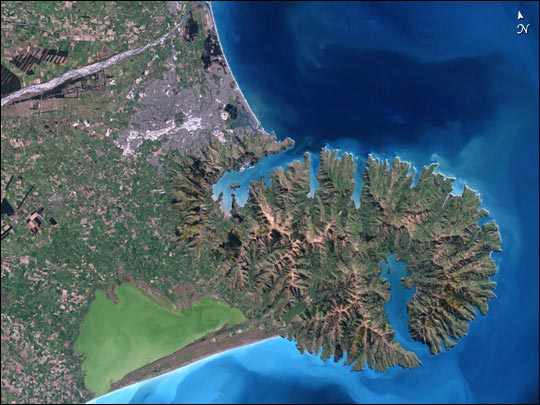
New Zealand Earthquake Offers Lesson to U.S. West Coast

For a relatively small earthquake, the aftershock that struck New Zealand today (Feb. 22) packed a deadly punch.
The earthquake measured only magnitude 6.3 but killed at least 65 people and destroyed buildings across the southeast city of Christchurch — an important lesson to cities that face similar risks up and down the West Coast of North America, one expert says.
"The same characteristics that caused such destruction and so many deaths in Christchurch are similar to those facing Portland, Seattle, parts of the Bay Area and many other West Coast cities and towns," Robert Yeats, a professor emeritus of geology at Oregon State University in Corvallis, said in a statement.
Today's temblor was an aftershock of the much more powerful 7.0-magnitude earthquake that struck about 25 miles (40 kilometers) west of Christchurch last September, according to the U.S. Geological Survey. That earlier quake did not result in any fatalities, however.
Different place, similar risks
Even though today's earthquake was weaker than last year's, it was much shallower and directly under Christchurch; it also hit during the lunch hour, when more people were exposed to damage. The quake shook sediments that were prone to so-called liquefaction,which can magnify the damage done by the ground shaking.
Yeats said that same description fits many major cities and towns in Washington state, Oregon and California, as well as British Columbia, Canada.
Sign up for the Live Science daily newsletter now
Get the world’s most fascinating discoveries delivered straight to your inbox.
"The latest New Zealand earthquake hit an area that wasn't even known to have a fault prior to last September; it's one that had not moved in thousands of years," Yeats said. "But when you combine the shallow depth, proximity to a major city and soil characteristics, it was capable of immense damage."
Yeats added, "It's worth keeping in mind that New Zealand has some of the most progressive building codes in the world. They are better prepared for an earthquake like this than many U.S. cities would be."
The risks from shallow "crustal faults," Yeats said, are often given less attention than the concerns about the major subduction zone earthquakes that are in the Pacific Northwest's future, or other major quakes on famous plate boundaries such as the San Andreas Fault. There are dozens or hundreds of shallow faults that can cause serious earthquakes in the West, Yeats said.
Liquid soil
Among the dangers is the risk of liquefaction — the characteristic of some soils, particularly sediments deposited over long periods of time, to become saturated with water and quiver like a bowl of gelatin during an earthquake. Such motions can significantly increase building damage and loss of life.
"Much of the Willamette Valley in Oregon is a prime example of soils that could liquefy, old sediments deposited during floods and coming down from the Cascade Range," Yeats said. "It's very similar in that sense to the area around Christchurch, which sits on sand, silt and gravel from the Southern Alps to the west.
"This issue, along with the risks posed by crustal faults, has to be considered in our building codes."
Unknown faults
The city of Portland, Ore., sits astride the Portland Hills Fault — which may or may not still be active — and faces significant liquefaction concerns in many areas. Seattle faces similar risks from the Seattle Fault, which is active. And whether or not an earthquake has happened lately offers little reassurance — the New Zealand fault that just crippled Christchurch hadn't moved in millennia.
"The damage in New Zealand in the past day has been terrible, just horrible," Yeats said. "But as bad as it has been, it's worth noting that it could have been a lot worse. In the earlier earthquake, as well as this one, their building codes have saved a lot of lives. If the same type of event had happened in urban areas of many developing nations, the damage would have been catastrophic."
Like much of the West Coast, Yeats said, New Zealand sits near a major boundary of the Earth's great plates — in this case, the junction of the Australia Plate and the Pacific Plate. Despite intensive seismic studies in that nation, no one had yet identified the related fault that just devastated Christchurch.
"We can learn about earthquakes and help people understand the seismic risks they face," Yeats said. "But it's still an inexact science, the exact timing of an earthquake cannot be predicted, and the best thing we can do is prepare for these events before they happen."
This story was provided by OurAmazingPlanet, a sister site to LiveScience.










